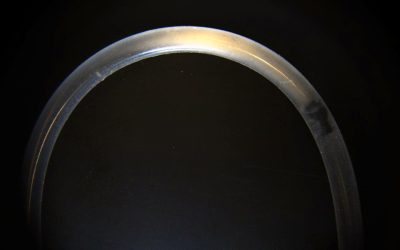Image credit: Davyn Ben on Unsplash
The spread of COVID-19 has changed the lives of people around the world and has had a major impact on our daily lives. Other viruses have emerged suddenly from obscurity, such as Ebola, avian influenza, and SARS, all of which present a serious threat to human health and economies worldwide.
The development of wearable sensors that can continuously monitor the environment for viruses has become imperative as it would enable us to better detect a source of infection and hopefully halt its spread. In a recent paper published in the journal Advanced Materials, researchers looked into the most recent endeavors made the development of functional biosensors for this purpose.
“Research on improving the performance of virus sensors has not progressed much in recent years,” says Tohoku University materials engineer Fumio Narita. “Our review aims to help young researchers and graduate students understand the latest progress to guide their future work for improving virus sensor sensitivity.”

For years, scientists have been studying materials that can convert mechanical energy into electrical or magnetic energy, and vice versa. These materials are known as piezoelectric materials.
When it comes to detecting viruses, they could play an important role. Antibodies that interact with a specific virus can be placed on an electrode incorporated onto a piezoelectric material. When the target virus interacts with the antibodies, it causes an increase in mass that decreases the frequency of the electric current moving through the material, signalling its presence. This type of sensor is currently being investigated for detecting several viruses, including the cervical-cancer-causing human papilloma virus, HIV, influenza A, Ebola, and hepatitis B.
When it comes to sensing bacterial infections, magnetostrictive materials, which convert mechanical into magnetic energy and vice versa, have shown promise. In these materials, probing antibodies are fixed onto a biosensor chip placed on the magnetostrictive material and then a magnetic field is applied. If the targeted antigen interacts with the antibodies, it adds mass to the material, leading to a magnetic flux change that can be detected using a sensing “pick-up coil”.
Narita says that developments in artificial intelligence and simulation studies can help find even more sensitive piezoelectric and magnetostrictive materials for detecting viruses and other pathogens. Future materials could be coilless, wireless, and soft, making it possible to incorporate them into fabrics and buildings.
Scientists are now investigating how to use these and similar materials to detect SARS-CoV-2, the virus that causes COVID-19, in the air. This sort of sensor could be incorporated into underground transportation ventilation systems, for example, in order to monitor virus spread in real time. Wearable sensors could also direct people away from a virus-containing environment.
“Scientists still need to develop more effective and reliable sensors for virus detection, with higher sensitivity and accuracy, smaller size and weight, and better affordability, before they can be used in home applications or smart clothing,” says Narita. “This sort of virus sensor will become a reality with further developments in materials science and technological progress in artificial intelligence, machine learning, and data analytics.”
Reference: Fumio Narita, et al., A Review of Piezoelectric and Magnetostrictive Biosensor Materials for Detection of COVID‐19 and Other Viruses, Advanced Materials (2020). DOI: 10.1002/adma.202005448

















